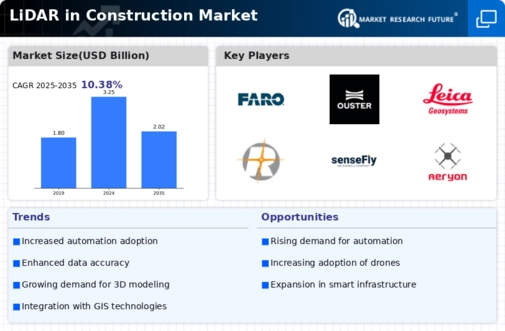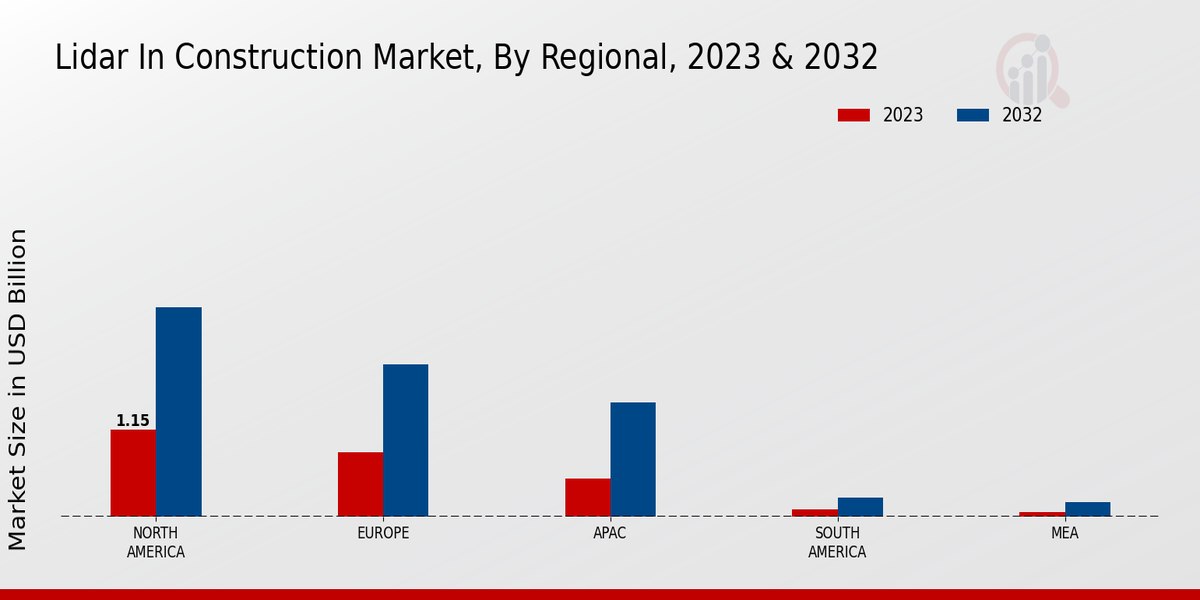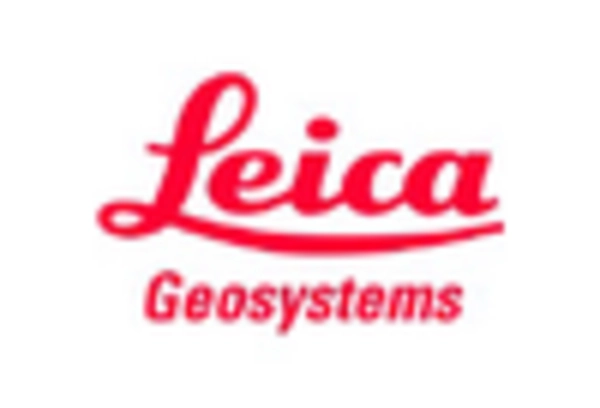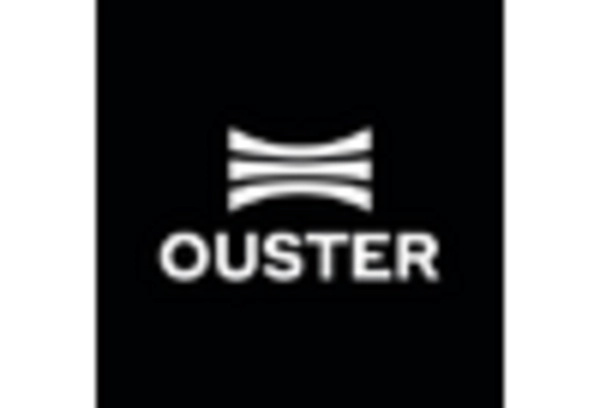Increased Focus on Sustainability
The LiDAR in Construction Market is increasingly aligned with sustainability initiatives as construction firms seek to minimize their environmental impact. LiDAR technology enables precise measurements and assessments of land, which can lead to more efficient resource management and reduced waste. By utilizing LiDAR for site analysis, construction companies can optimize their designs to preserve natural landscapes and reduce carbon footprints. This focus on sustainability is not only a response to regulatory pressures but also a reflection of changing consumer preferences towards environmentally friendly practices. Consequently, the integration of LiDAR technology is likely to become a standard practice in sustainable construction, driving further market growth.
Regulatory Compliance and Standards
The LiDAR in Construction Market is increasingly influenced by the need for regulatory compliance and adherence to industry standards. Governments and regulatory bodies are establishing guidelines that necessitate the use of advanced surveying technologies to ensure safety and accuracy in construction projects. For example, regulations regarding land use and environmental impact assessments often require detailed topographical data, which LiDAR can provide efficiently. This compliance not only enhances project feasibility but also mitigates risks associated with construction errors. As a result, the demand for LiDAR technology is expected to rise, as construction firms seek to align with these regulations while improving their operational efficiency.
Technological Advancements in LiDAR
The LiDAR in Construction Market is experiencing a surge in technological advancements that enhance data accuracy and processing speed. Innovations in sensor technology, such as the development of smaller, lighter, and more efficient LiDAR systems, are making it easier for construction professionals to integrate these tools into their workflows. For instance, the introduction of mobile LiDAR systems allows for rapid data collection over large areas, which is particularly beneficial for surveying and mapping tasks. As a result, the market is projected to grow at a compound annual growth rate of approximately 25% over the next five years, driven by these advancements. This growth indicates a strong demand for precise and efficient surveying solutions, positioning LiDAR as a critical tool in modern construction practices.
Enhanced Project Management and Efficiency
The LiDAR in Construction Market is significantly benefiting from enhanced project management capabilities that LiDAR technology provides. By offering real-time data collection and analysis, LiDAR systems enable construction managers to monitor project progress and identify potential issues before they escalate. This proactive approach to project management can lead to substantial cost savings and improved timelines. Studies indicate that projects utilizing LiDAR technology can reduce overall project duration by up to 30%, thereby increasing efficiency. As construction firms strive to optimize their operations and deliver projects on time, the adoption of LiDAR technology is expected to rise, further propelling the market forward.
Growing Demand for 3D Mapping and Modeling
The LiDAR in Construction Market is witnessing a growing demand for 3D mapping and modeling solutions. As construction projects become more complex, the need for accurate and detailed representations of physical environments is paramount. LiDAR technology offers high-resolution 3D models that facilitate better planning, design, and execution of construction projects. According to recent estimates, the market for 3D mapping solutions is anticipated to reach USD 10 billion by 2026, with LiDAR playing a pivotal role in this growth. The ability to visualize and analyze spatial data in three dimensions allows construction professionals to make informed decisions, thereby enhancing project outcomes and efficiency.

















Leave a Comment